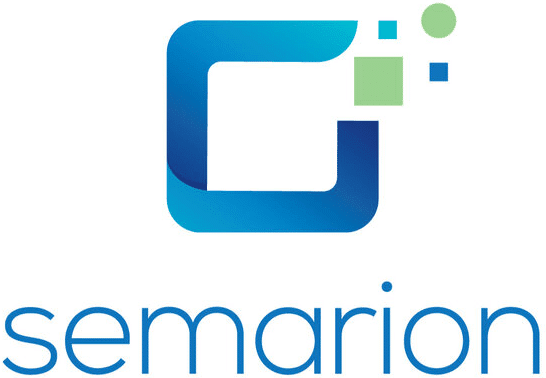The SemaCyte® Starter Kit
SemaCyte® microcarriers are used to barcode, move, and freeze adherent cells for more powerful cell assaying workflows. Seeding Dishes contain arrays of barcoded microcarriers immobilised onto the bottom of standard tissue culture plasticware. Cells can be seeded onto the array as per standard tissue culture protocols. Once cells have attached, SemaCytes can be released into suspension and collected in cryovials for storage, or dispensed into microplates for immediate assaying with your prefered reagents and equipment.
SemaCyte Starter Kit contents: Seeding Dish 20, SD20 (3x), SemaPure15 (1x), SemaPlate (1x)
Special carriers sizes, formats, and coatings available on request.
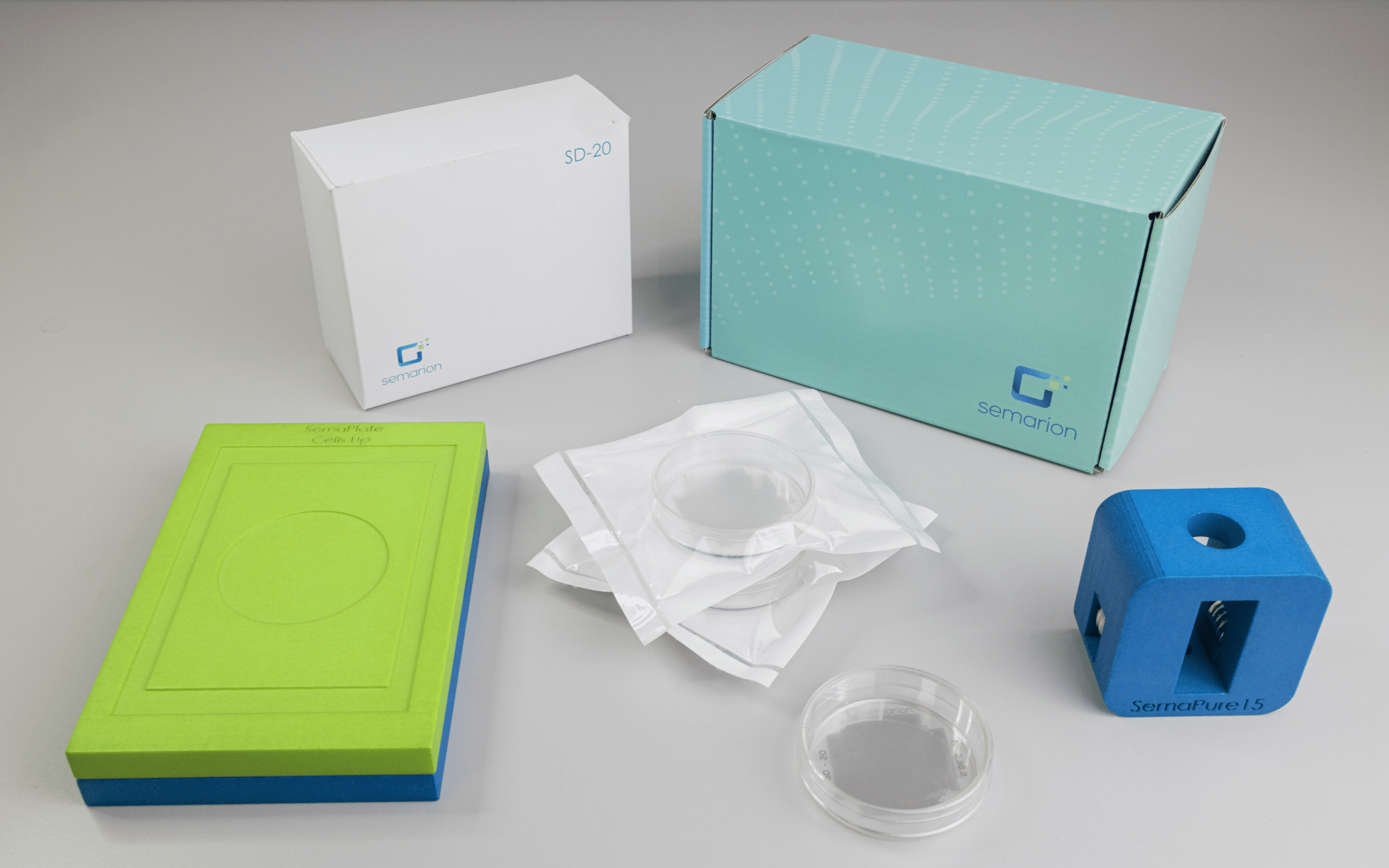
Seeding Dishes
A standard 20 sq. cm Seeding Dish (SD-20) contains 50,000 immobilised SemaCyte microcarriers, each with a 100 x 100 sq. µm growth area with a synthetic fibronectin-mimetic matrix.
Each Seeding Dish contains SemaCyte® Microcarriers with a specific barcode.
One SD-20 produces enough microcarriers for 2-10 multiwell plates worth of experiments. The recommended density of SemaCytes per well ranges from 40-200 for 96-well plates and 10-50 for 384-well plates.
The SD-75 contains 200,000 SemaCyte microcarriers for higher needs.
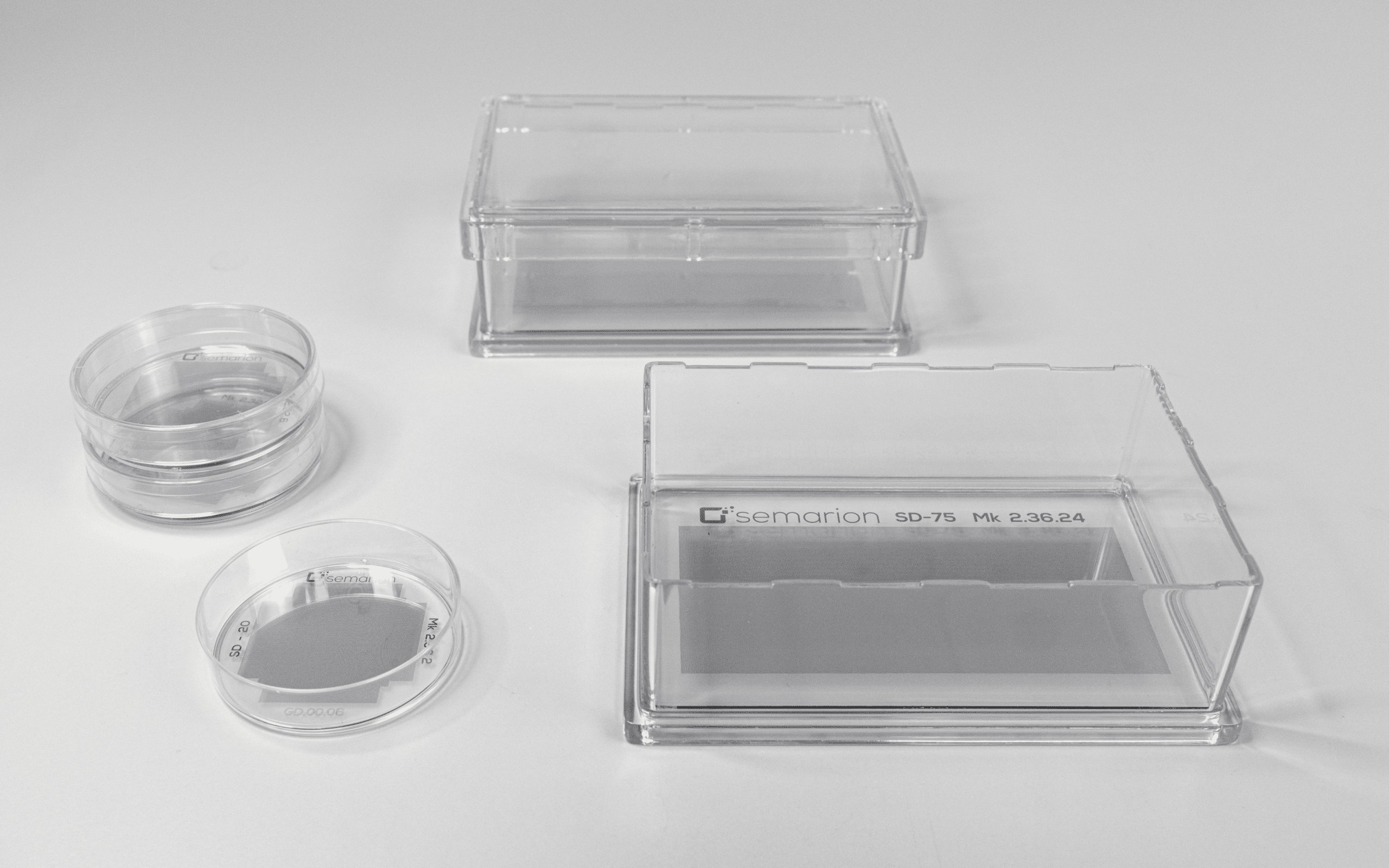
Peripherals
SemaCyte® microcarriers have been developed to integrate seamlessly with existing workflows. They can be assayed in standard microwell plates and are compatible with plate readers and microscope systems.
The SemaPure15 holds 15 mL tubes and purifies SemaCytes after they have been released from the Seeding Dish.
The SemaPlate pulls the SemaCytes down to the bottom of the microplate during dispensing. The orientation of the microcarriers inside the plate, i.e. cells up or down, can be chosen.
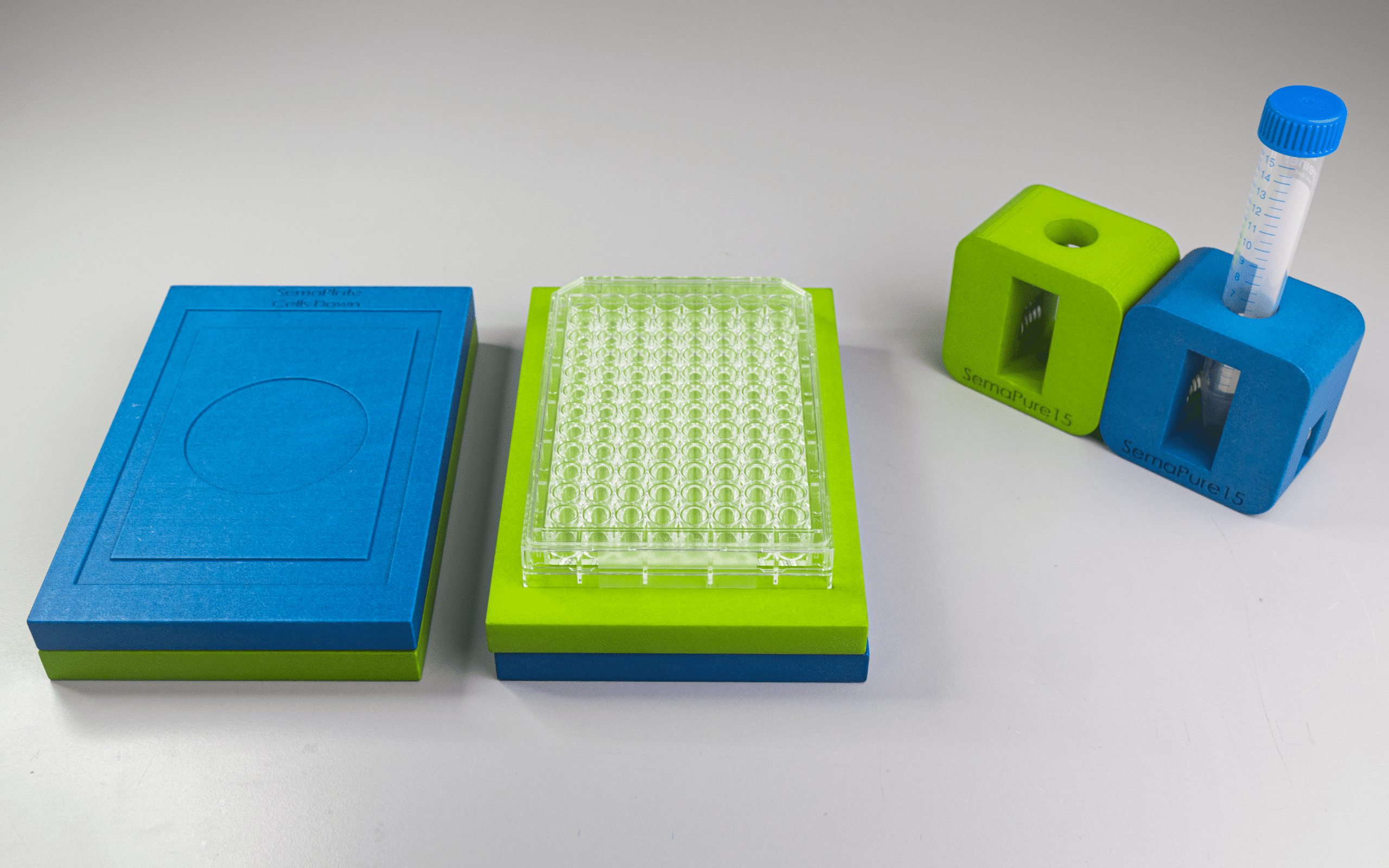
Benefits of SemaCyte Microcarriers
SemaCyte® Microcarrier Workflow
The SemaCyte Starter Kit is compatible with various cell types, assay kits, and read-out equipment.
Click here to watch our SemaCyte Microcarrier webinar to learn more.
Cell Seeding
Cells are seeded on SemaCyte Seeding Dishes and placed in the incubator until the desired morphology and confluency is achieved.
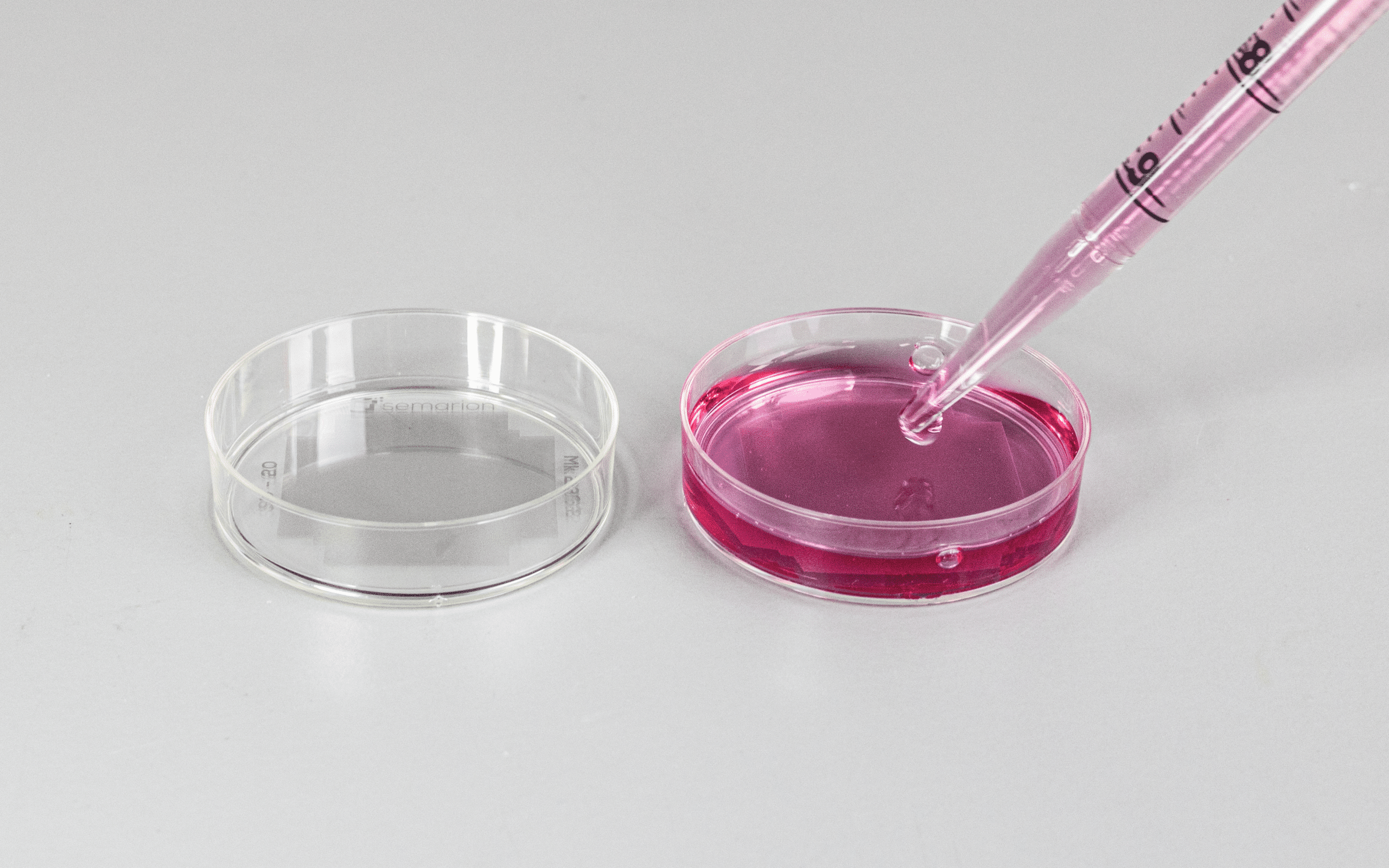
Release & Purify
SemaCytes are released with gentle agitation and collected in a tube. The microcarriers are purifed with the SemaPure15 to remove any debris and unattached cells.
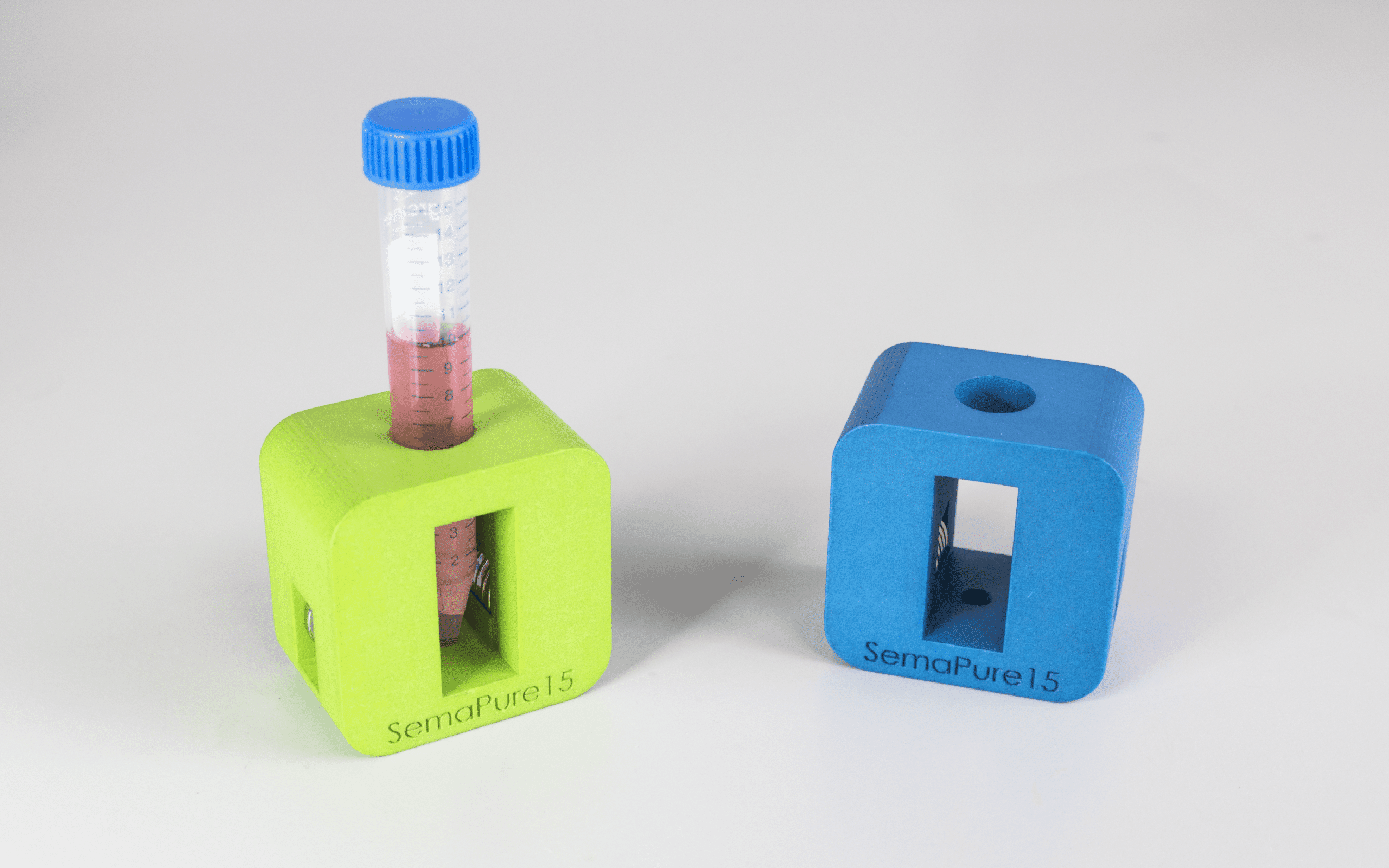
Dispense & Assay
Fresh or cryopreserved SemaCytes are loaded into a microplate. They can be pooled to multiplex. The SemaPlate showing “Cells Up” ensures the correct landing of microcarriers. The plate can now be assayed.
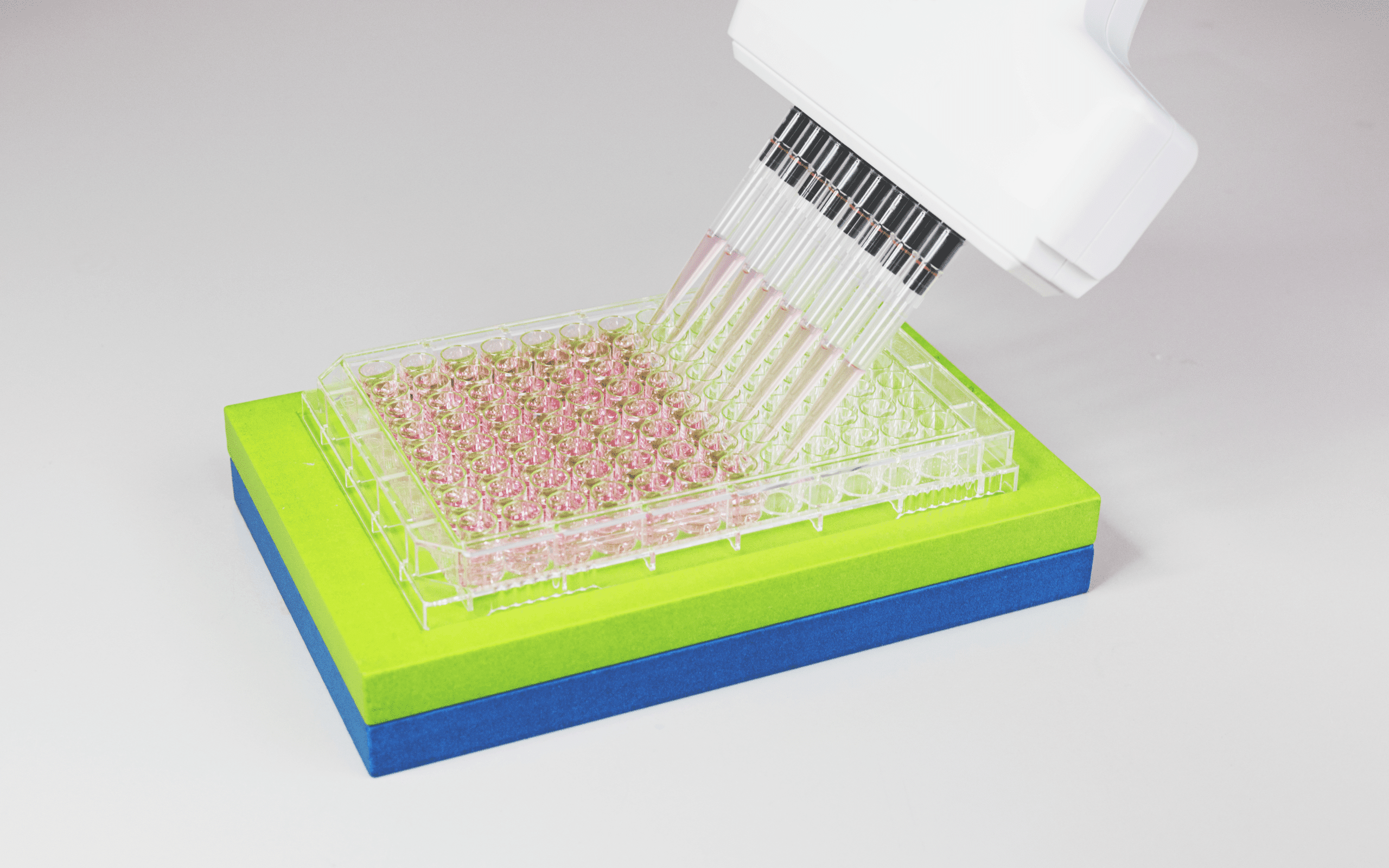
Prepare for Imaging
For imaging, the microplate is placed on the SemaPlate showing “Cells Down”. This rotates the SemaCytes to ensure that the cells face the objective of the microscope for clear imaging.
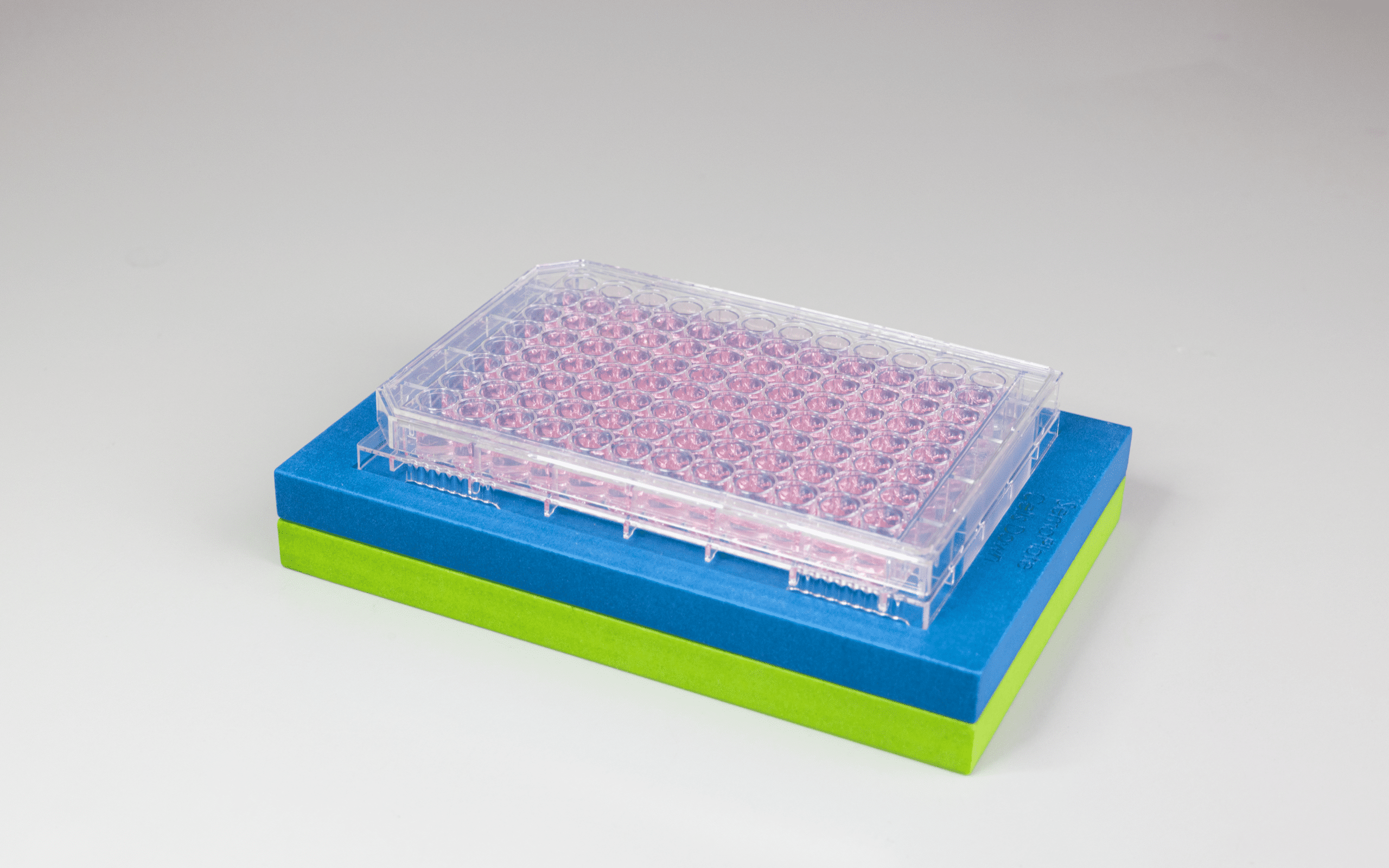
Use Cases
More details can be found in our brochure below.
Faster Cell Panel Screens
4-plex mechanistic assay pools A549, PC3, T98G, and HepG2 cells to evaluate differential p53 induction by Nutlin-3a.
This approach reduces assay time by 2-fold and reagent cost by 4-fold.
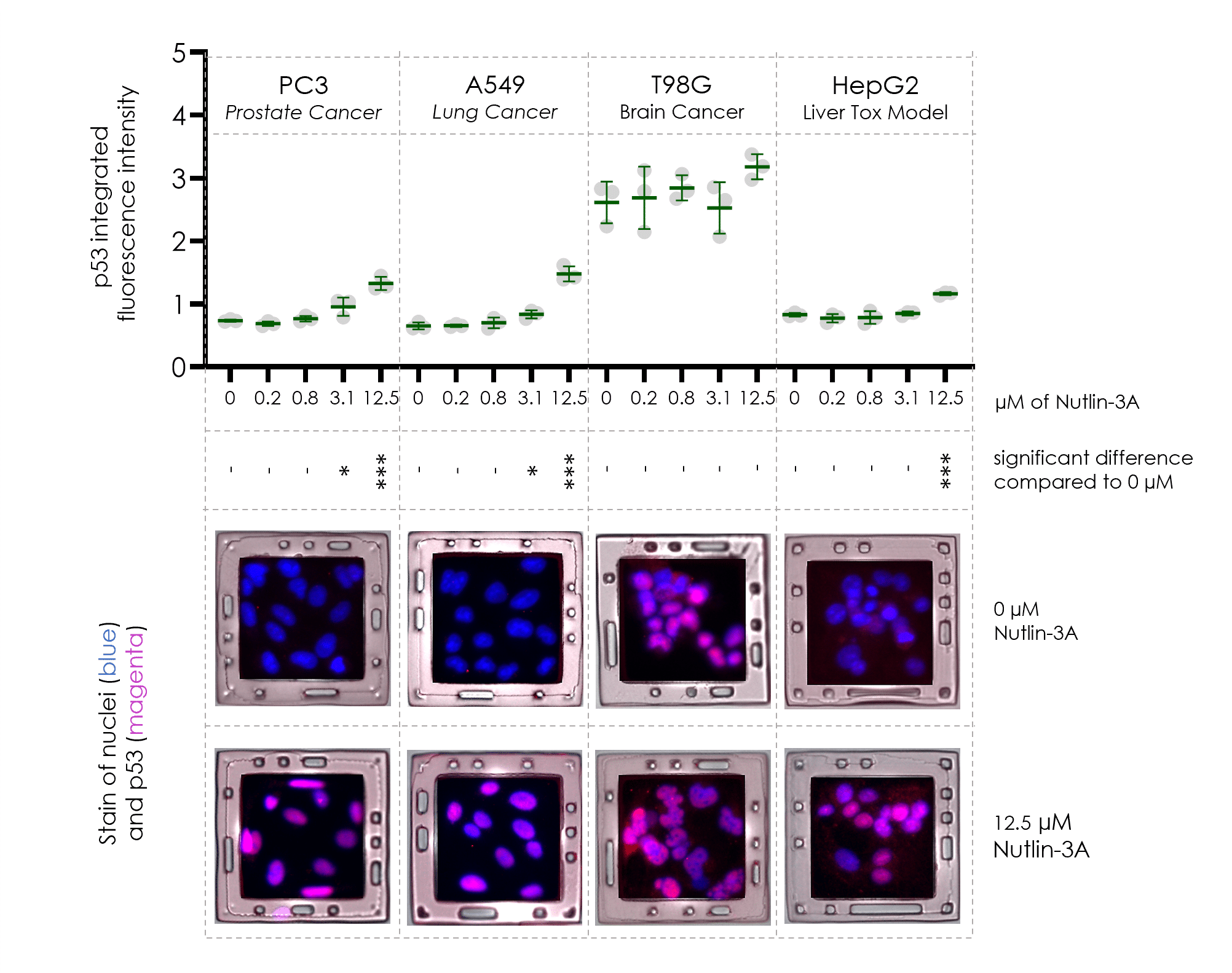
High Recovery for Adherent Assay-Ready Cells on SemaCytes
A549 lung cancer cells attached to SemaCyte microcarriers for 24 hours and batch frozen in cryovials showed consistant >75% recovery rates.

Rapid Viability & Proliferation Assays
Assay-ready cells on SemaCytes were used for 24h viability or 72h proliferation assays.
This approach removes the 24h cell seeding and attachement step.

Rapid Mechanistic Assay
NanoBRET PPI cells were batch prepared on SemaCytes and frozen for on demand use in mechanistic assays.
This approach removes 3 days transfection preparation time for ultra-fast drug data generation.

Rapid, Miniaturised Cell Painting Assays
Adherent assay-ready cells on SemaCytes can be drugged and stained within 1h after thawing.
Images with SemaCyte microcarrier are compatible with analysis software such as Cell Profiler.

Miniaturised Complex Assays
iPS or patient derived cells can be grown on SemaCytes and dispensed at a low density in 96 or 284-well plates.
This approach can reduce the amount of cells-per-well by 5- to 50-fold to increase the number of experiments per cell sample.

